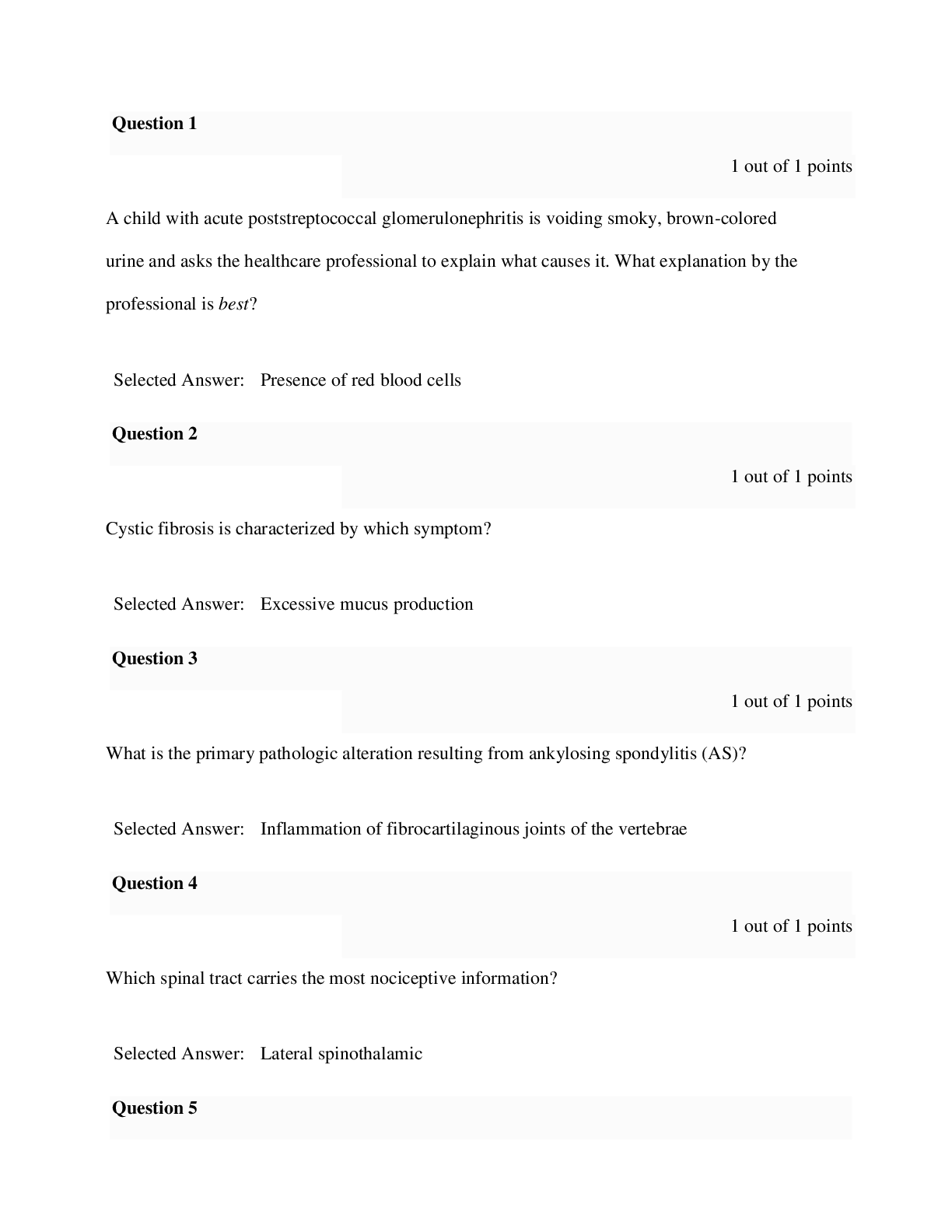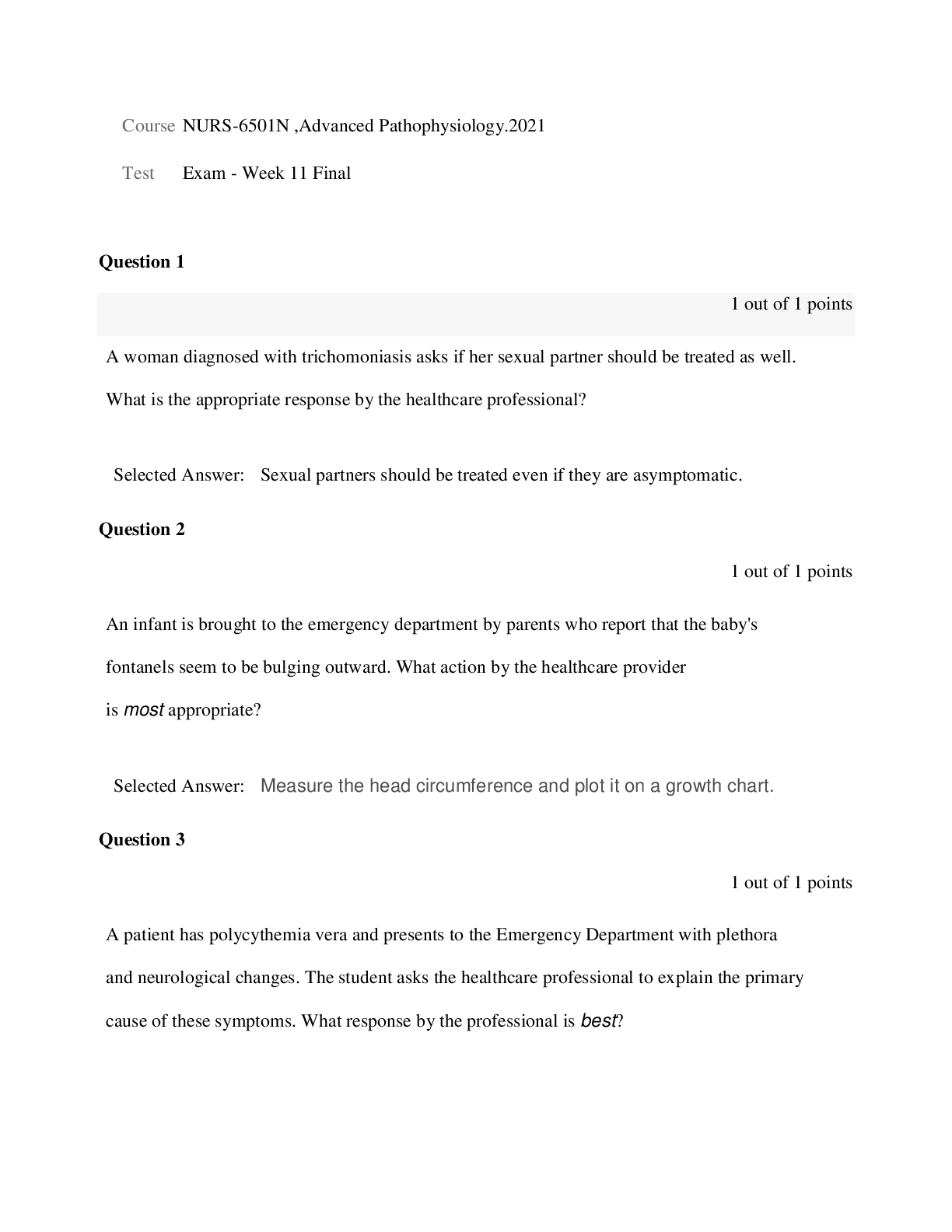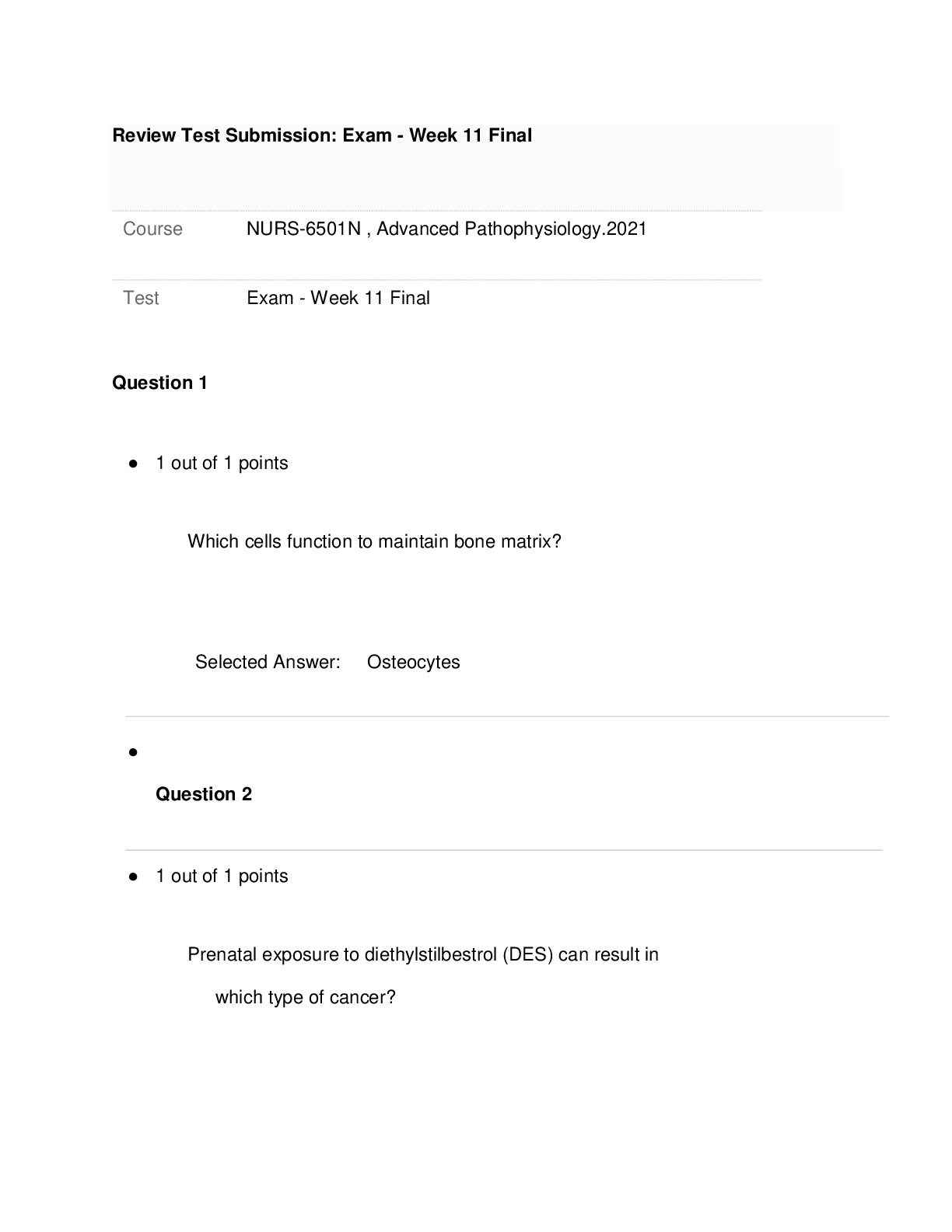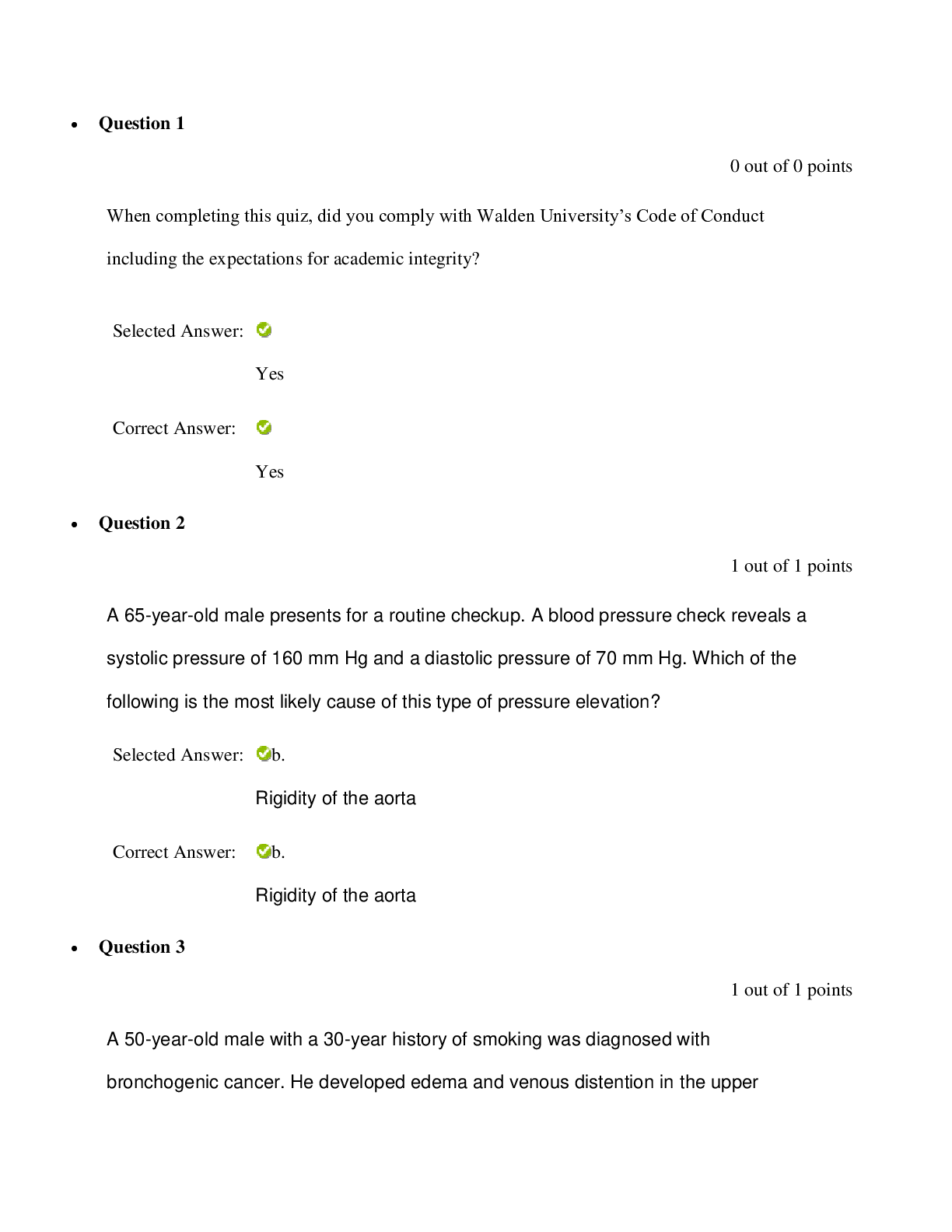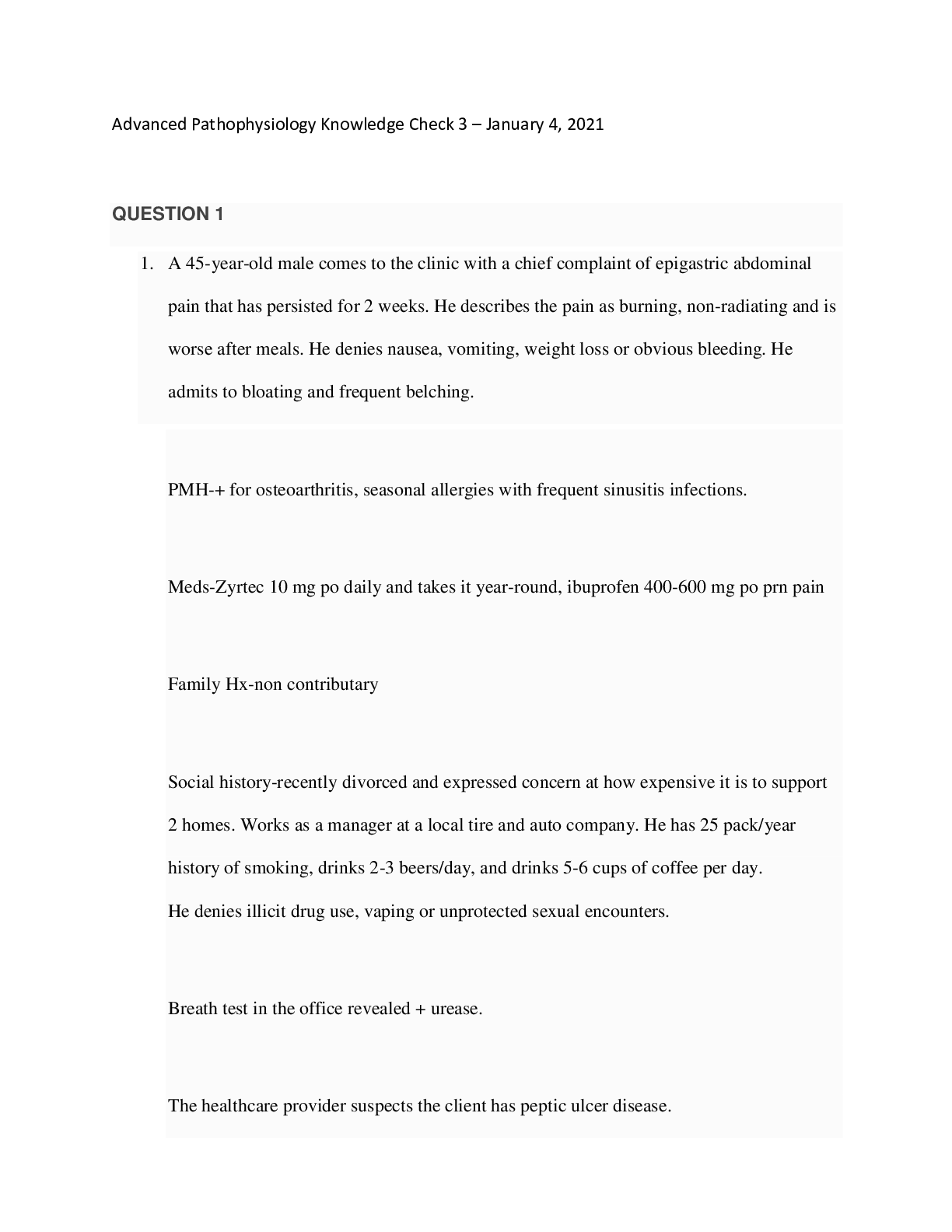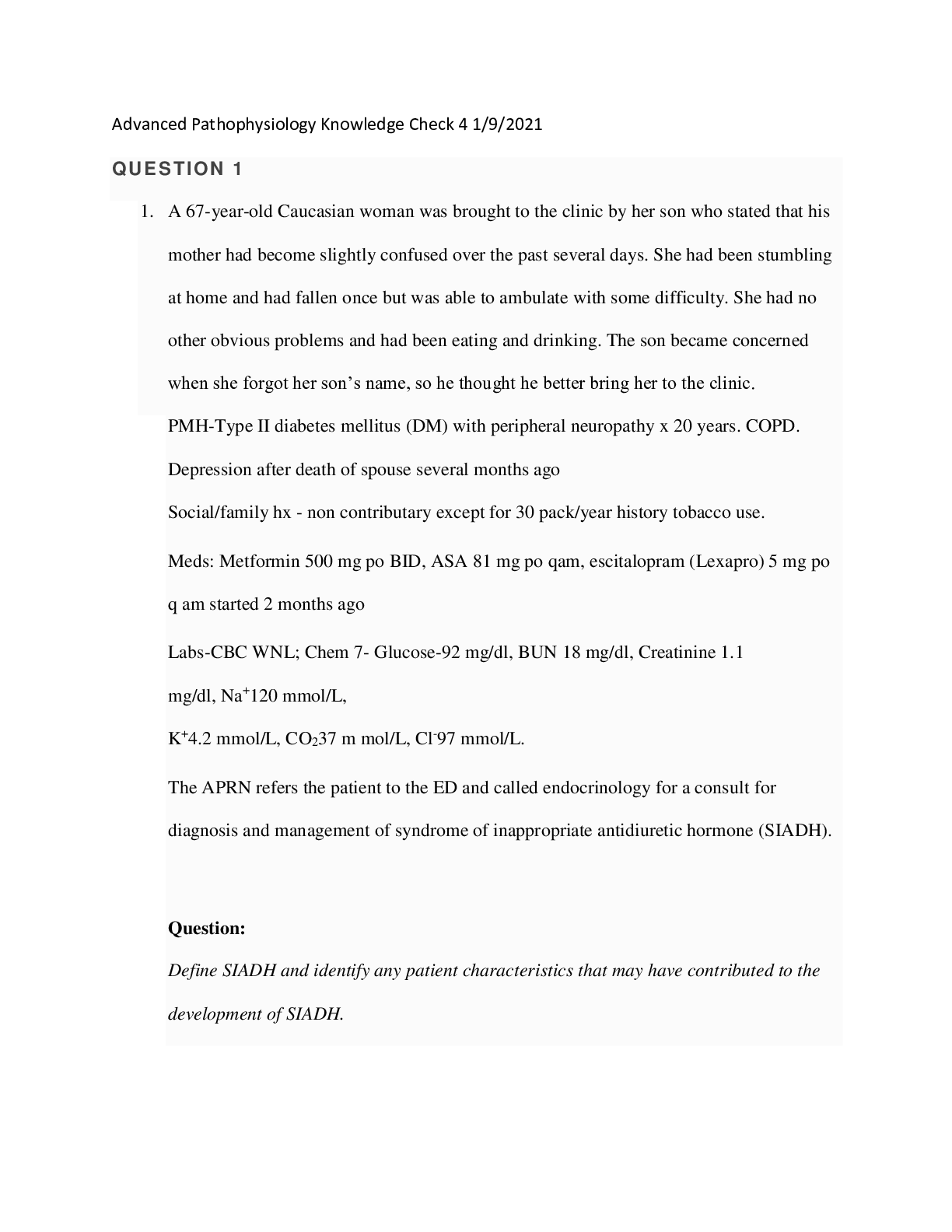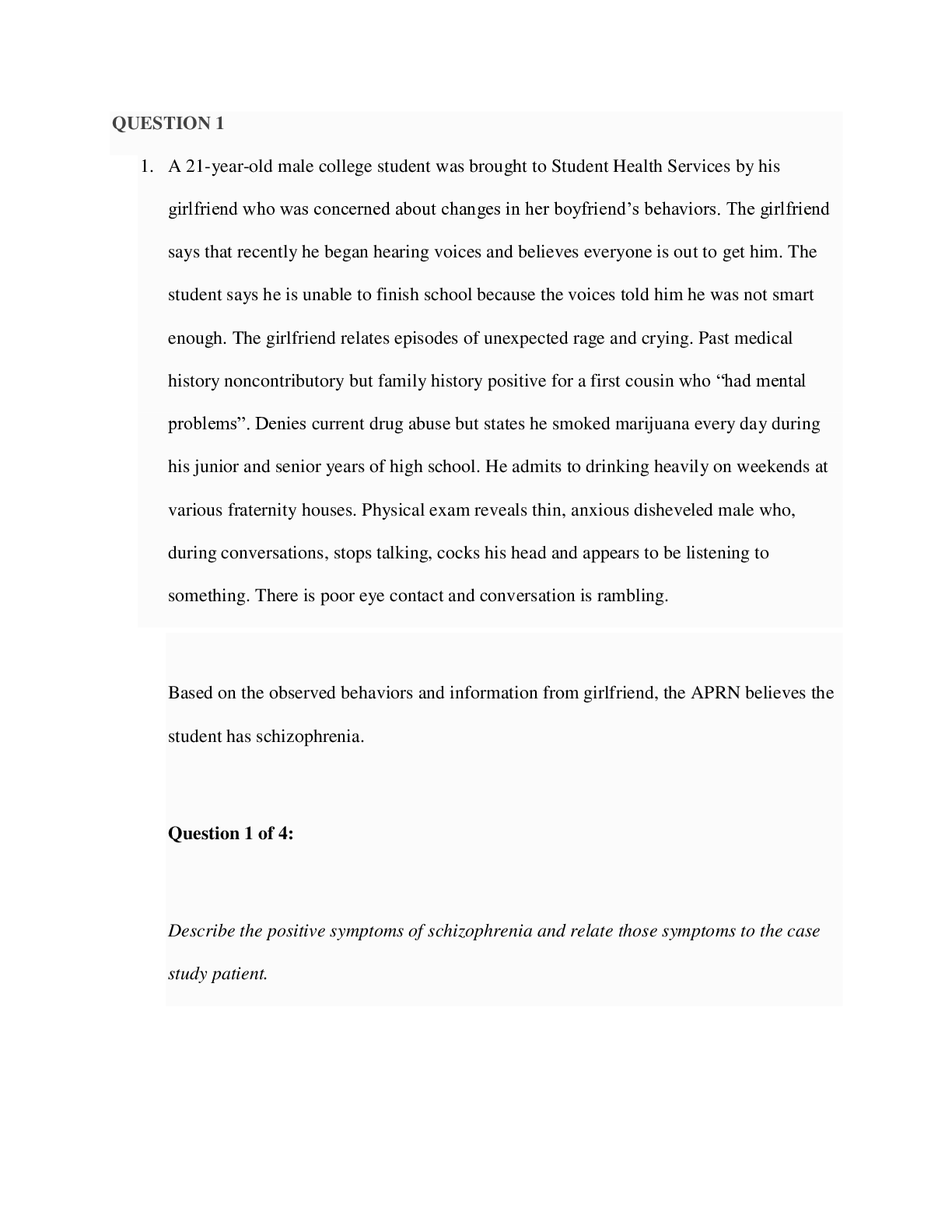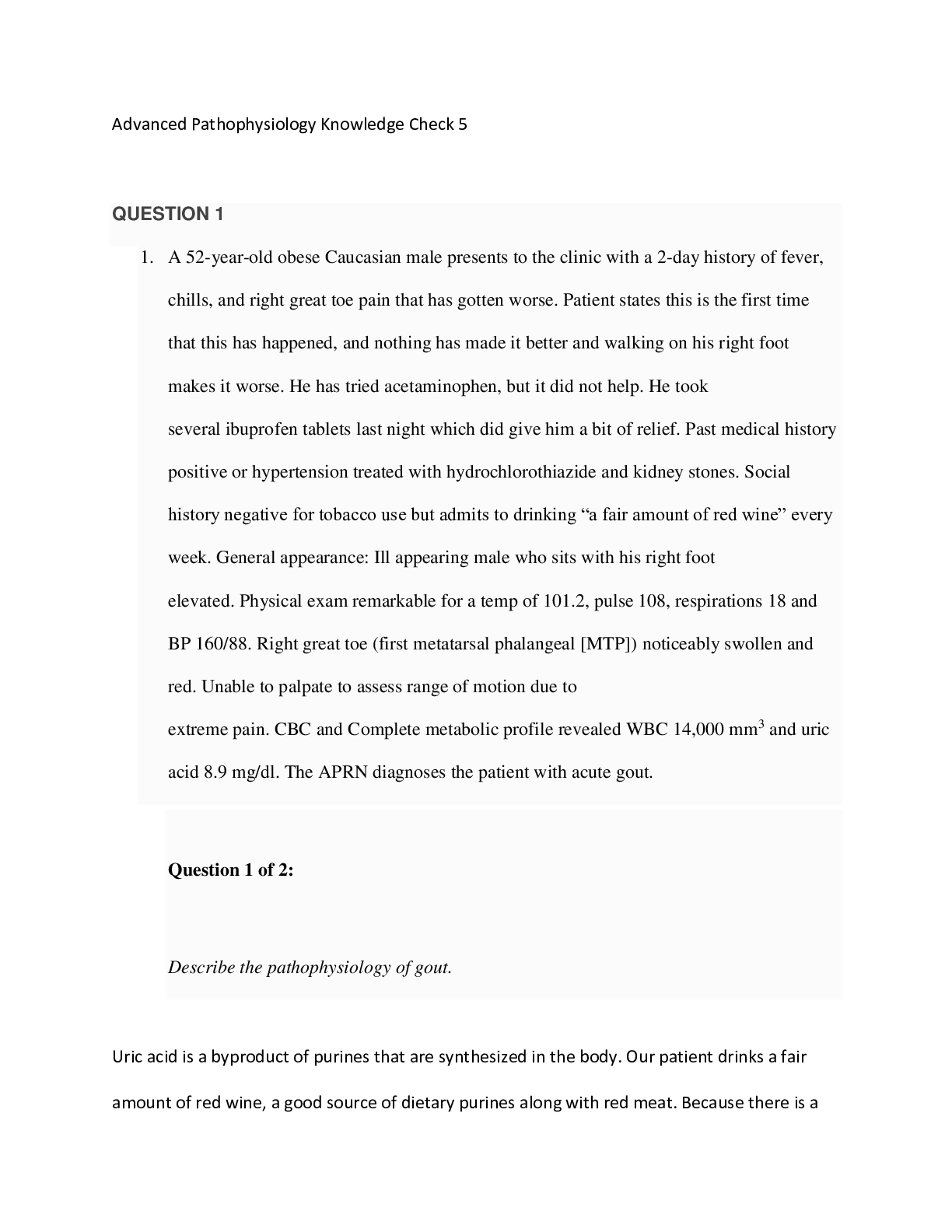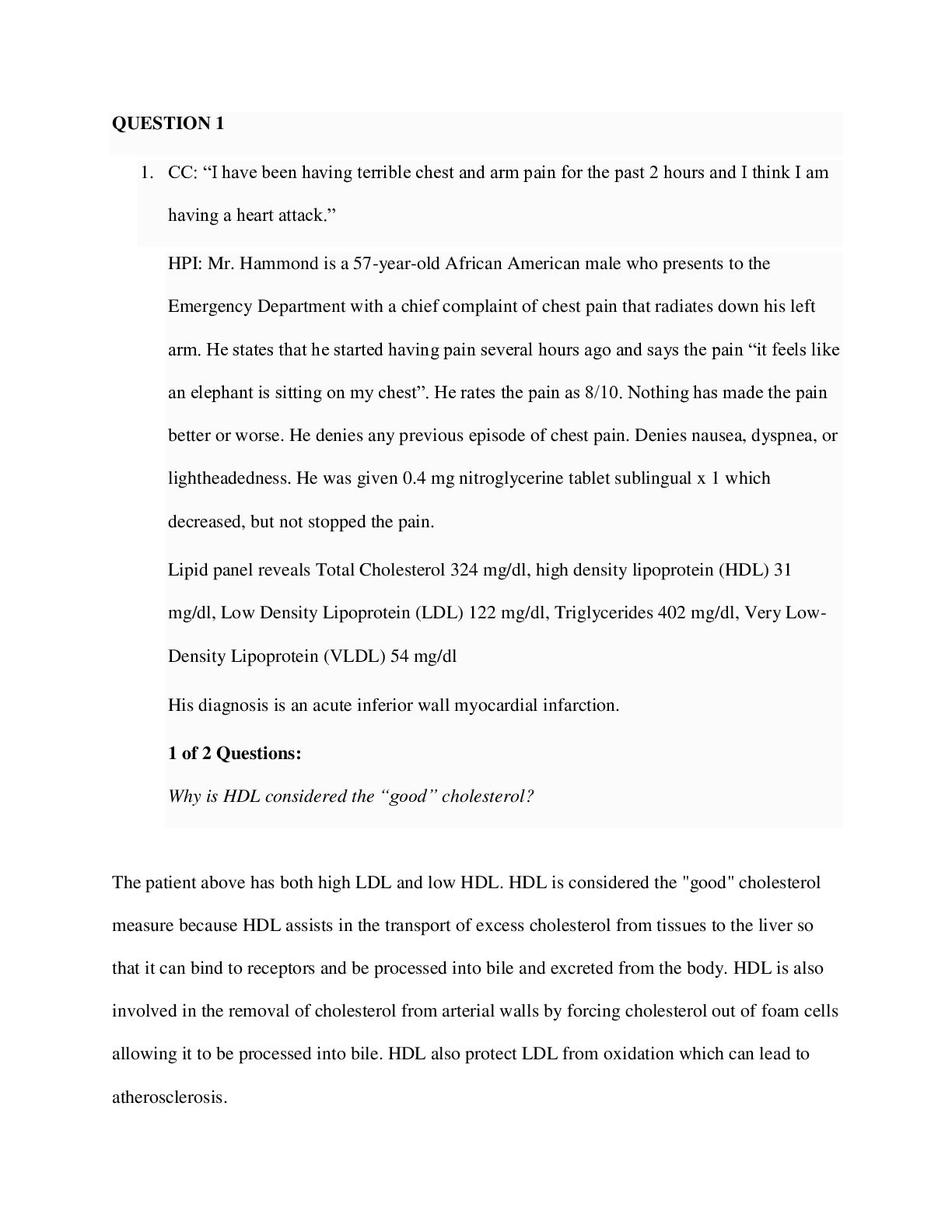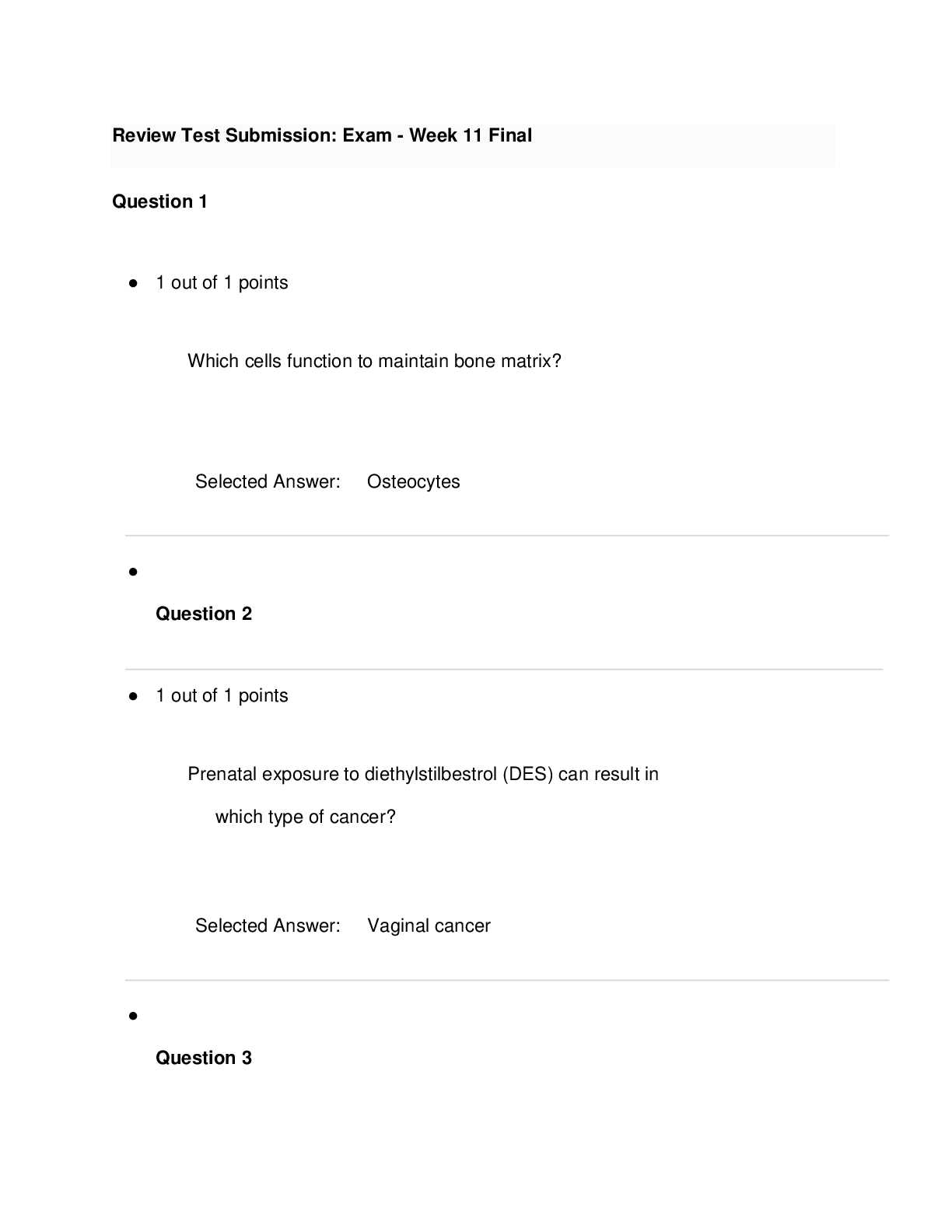*NURSING > QUESTIONS & ANSWERS > Walden University - NURS 6501N - 12Patho Quiz 5: Pathology, Quiz 5. 100%. (All)
Walden University - NURS 6501N - 12Patho Quiz 5: Pathology, Quiz 5. 100%.
Document Content and Description Below
• Question 1 1 out of 1 points When a person is in shock, a nurse remembers impairment in cellular metabolism is cause by: • Question 2 1 out of 1 points A 2-week-old infant ... presents with poor feeding, fatigue, dyspnea, and a murmur. She is diagnosed with a patent ductus arteriosus (PDA). A nurse recalls this condition results in a(n): • Question 3 1 out of 1 points A 50-year-old male was admitted to the intensive care unit with a diagnosis of acute myocardial infarction (MI). He is being treated for shock. His cardiopulmonary symptoms include low blood pressure, tachycardia, and tachypnea. His skin is pale and cool. The primary cause of his shock is most likely: • Question 4 1 out of 1 points Which of the following lab tests will the nurse check to help diagnose heart failure and provide insight into its severity? • Question 5 1 out of 1 points What factors make a patient prone to neurogenic shock? Neurogenic shock can be caused by any factor that inhibits the: • Question 6 1 out of 1 points An infant undergoes an echocardiogram for a suspected heart defect. Tests reveal an opening in the middle of the atrial septum. What term would the nurse use to describe this defect? • Question 7 0 out of 1 points A 56-year-old male presents to his primary care provider for a checkup. Physical exam reveals edema, hepatomegaly, and muffled heart sounds. Which of the following is of greatest concern to the nurse? • Question 8 1 out of 1 points A newborn child is diagnosed with tetralogy of Fallot. What symptoms would the nurse expect to observe in the child? • Question 9 1 out of 1 points A newborn is diagnosed with congenital heart disease. Which of the following intrauterine factors should the nurse focus on during the history that could have caused this disorder? • Question 10 1 out of 1 points A 60-year-old female was diagnosed with mitral stenosis. As a result, the nurse realizes the patient has incomplete emptying of the: • Question 11 1 out of 1 points A nurse is explaining the function of the heart. Which is a correct response by the nurse? A function of the pericardium is to: • Question 12 1 out of 1 points A newborn experiences frequent periods of cyanosis, usually occurring during crying or after feeding. Which of the following is the most likely diagnosis the nurse will observe on the chart? • Question 13 1 out of 1 points A nurse is planning care for a patient in shock. Which principle should the nurse remember? During shock states, glucose uptake is usually: • Question 14 1 out of 1 points Which is the most common type of congenital heart defect the nurse should assess for in infants? • Question 15 1 out of 1 points A 42-year-old female is diagnosed with constrictive pericarditis. The nurse assesses the blood pressure for decreased cardiac output because of: • Question 16 1 out of 1 points A 72-year-old female has a history of right heart failure caused by a right ventricular myocardial infarction. Which of the following symptoms are specifically related to her right heart failure? • Question 17 1 out of 1 points A 51-year-old male presents with recurrent chest pain on exertion. He is diagnosed with angina pectoris. When he asks what causes the pain, how should the nurse respond? The pain occurs when: • Question 18 1 out of 1 points A nurse is teaching staff about endocarditis. Which information should the nurse include? Inflammatory cells have difficulty limiting the colonization of microorganisms in infective endocarditis because the: • Question 19 1 out of 1 points A newborn child has a murmur and cyanosis. An echocardiogram reveals that the tricuspid valve failed to develop and no blood flows between the right atrium and ventricle. What term will the nurse use to describe this condition? Tricuspid: • Question 20 0 out of 1 points A 3-year-old male is diagnosed with Kawasaki disease. Which of the following does the nurse suspect is the most likely cause? • Question 21 1 out of 1 points A 30-year-old female presents to her primary care provider with fever, cardiac murmur, and petechial skin lesions. She is diagnosed with infective endocarditis. When the patient wants to know what caused the disease, what is the nurse’s best response? The most likely cause of the disease is: • Question 22 1 out of 1 points One consequence of switching from aerobic to anaerobic cellular metabolism during shock states is: • Question 23 1 out of 1 points A 75-year-old obese female presents to her primary care provider reporting edema in the lower extremities. Physical exam reveals that she has varicose veins. Upon performing the history, which of the following is a possible cause for the varicose veins? • Question 24 1 out of 1 points A 28-year-old female presents to the ER reporting severe chest pain that worsens with respirations or lying down. She has a fever, tachycardia, and a friction rub. Based upon the assessment findings, the nurse determines the patient is experiencing: • Question 25 1 out of 1 points For an infection to progress to septic shock, which of the following factors should the nurse determine occurred? • Question 26 1 out of 1 points A 1-month-old infant visits his primary care provider for a well-baby check. Physical exam reveals decreased cardiac output, hypotension, tachycardia, and a loud murmur suggestive of aortic stenosis. Which of the following would be expected with this diagnosis? • Question 27 1 out of 1 points A 27-year-old male is admitted to a neurologic unit with a complete C-5 spinal cord transection. On initial assessment, he is bradycardic, hypotensive, and hyperventilating. He appears to be going into shock. The most likely mechanism of his shock is: • Question 28 1 out of 1 points A 15-year-old male who is allergic to peanuts eats a peanut butter cup. He then goes into anaphylactic shock. Which assessment findings will the nurse assess for? • Question 29 1 out of 1 points A 1-month-old infant was diagnosed with truncus arteriosus (TA) with a ventricular septal defect. Which of the following would the nurse also expect? • Question 30 0 out of 1 points A 20-year-old male underwent an echocardiogram to assess chest pain. Results revealed a congenital defect in papillary muscles. Which of the following would the nurse expect to occur? [Show More]
Last updated: 2 years ago
Preview 1 out of 7 pages
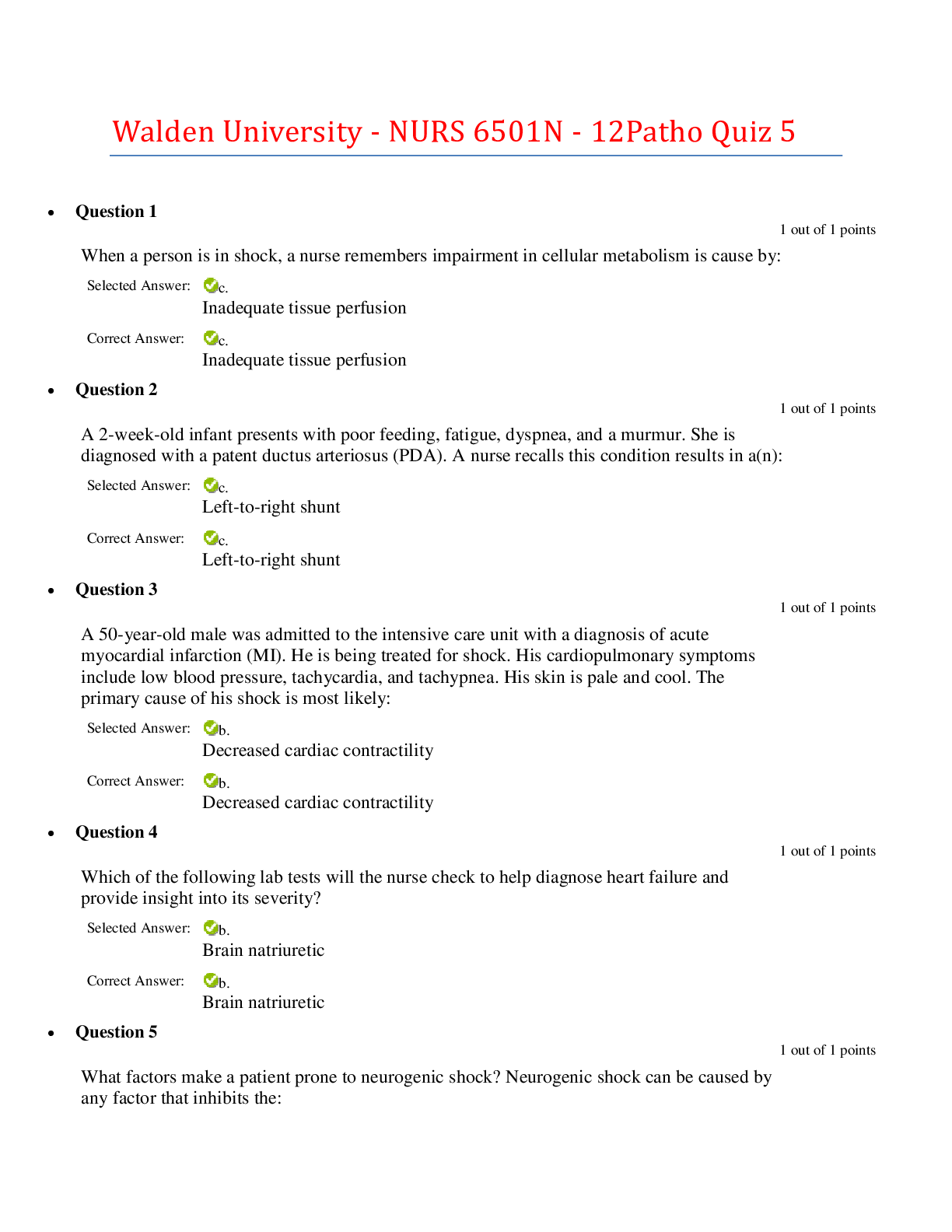
Buy this document to get the full access instantly
Instant Download Access after purchase
Buy NowInstant download
We Accept:

Reviews( 0 )
$9.00
Can't find what you want? Try our AI powered Search
Document information
Connected school, study & course
About the document
Uploaded On
Jul 16, 2020
Number of pages
7
Written in
Additional information
This document has been written for:
Uploaded
Jul 16, 2020
Downloads
0
Views
91



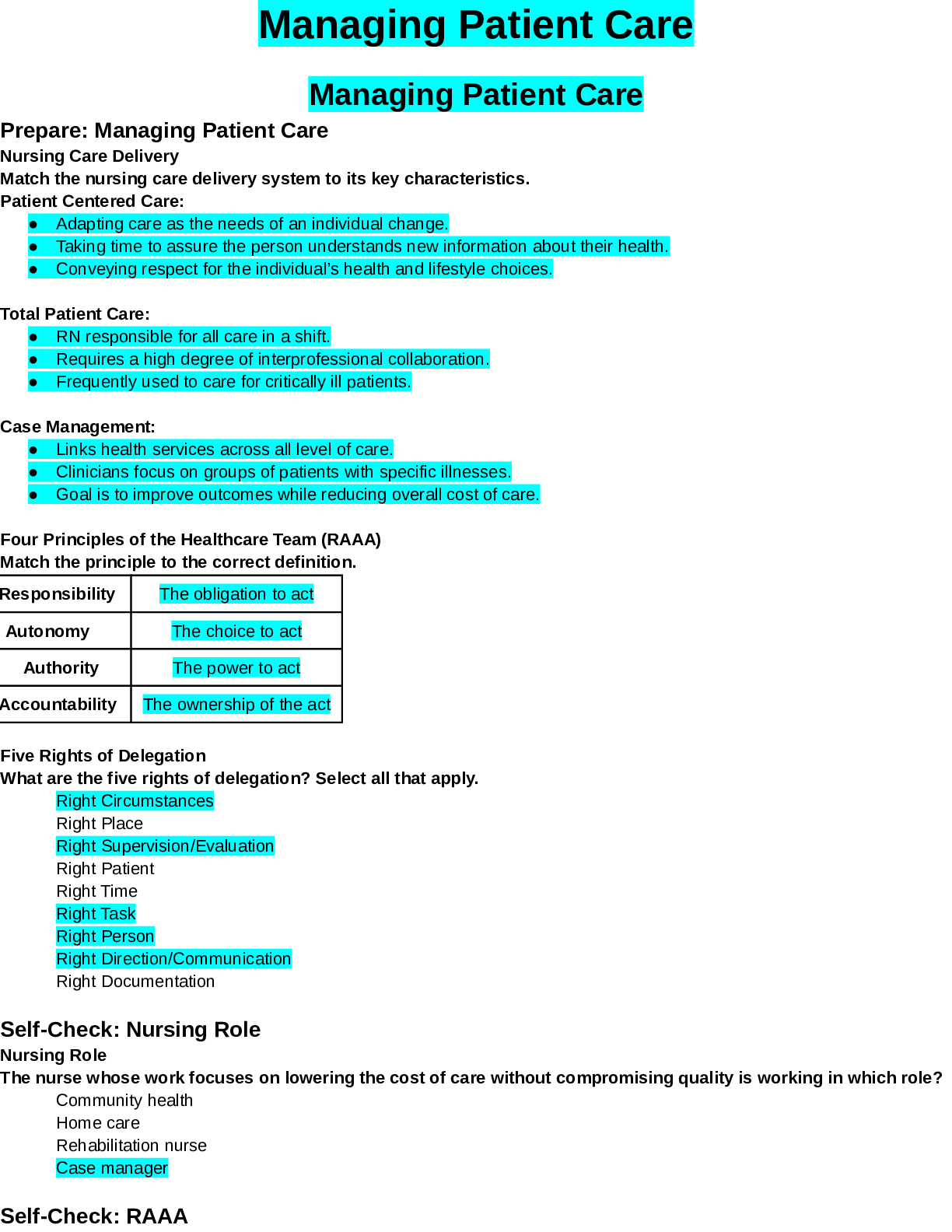




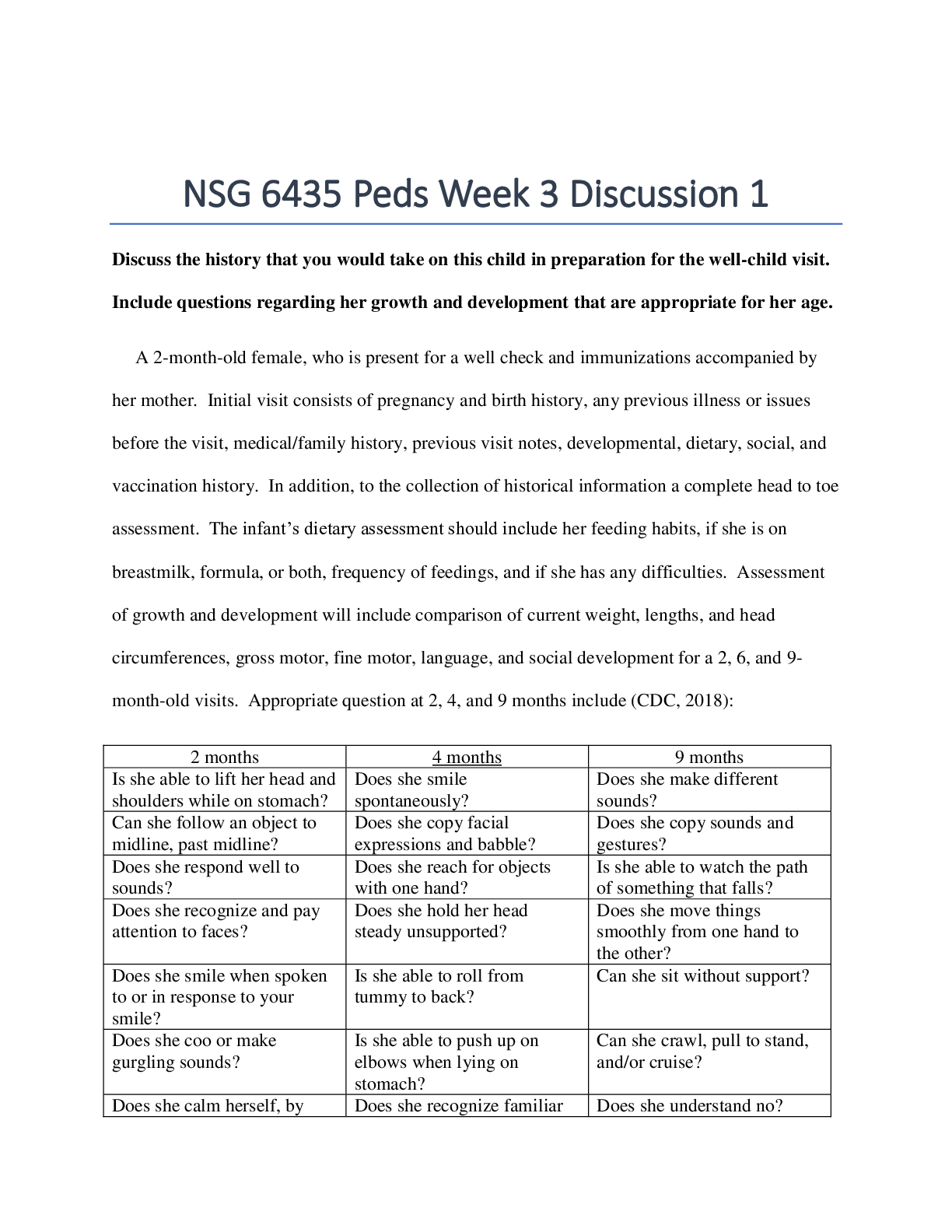
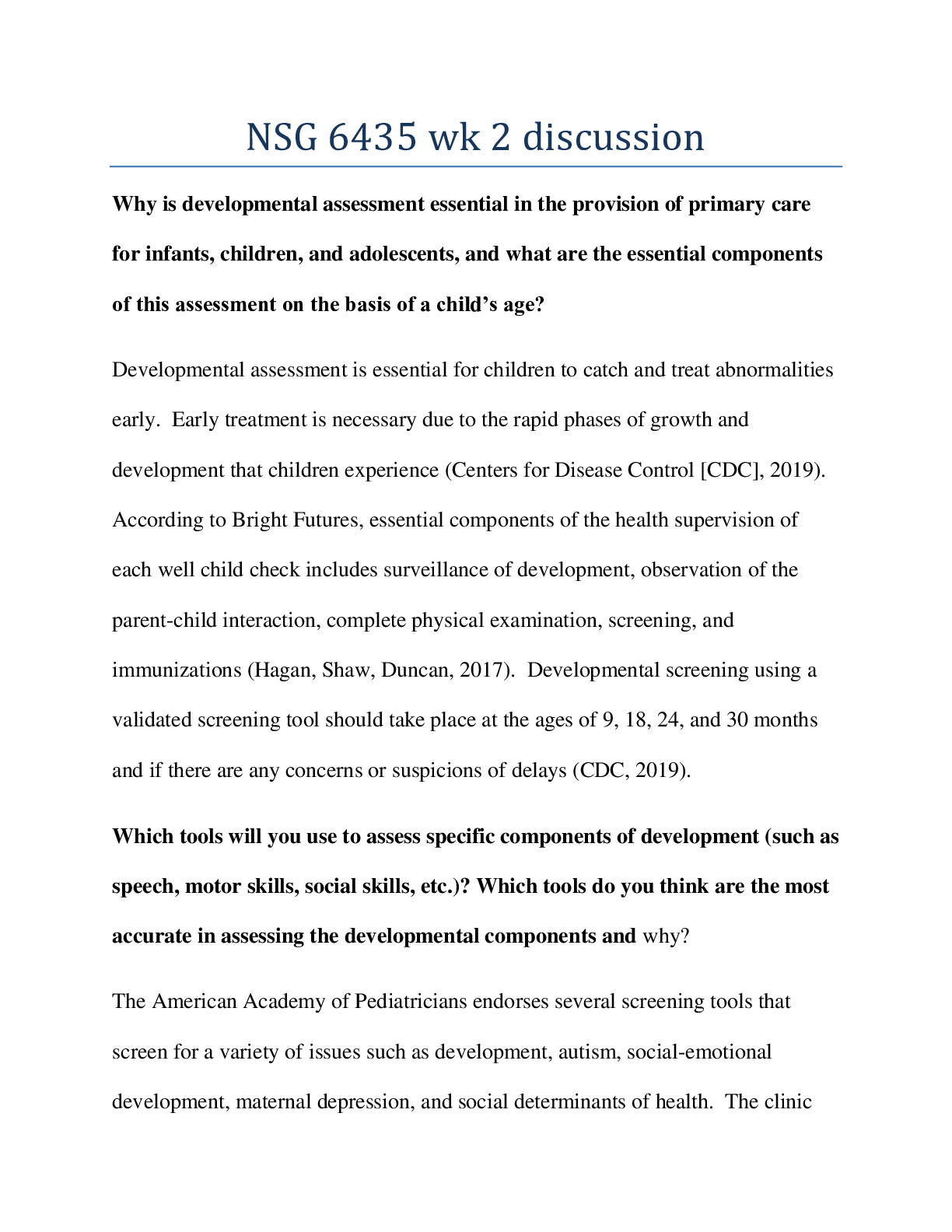
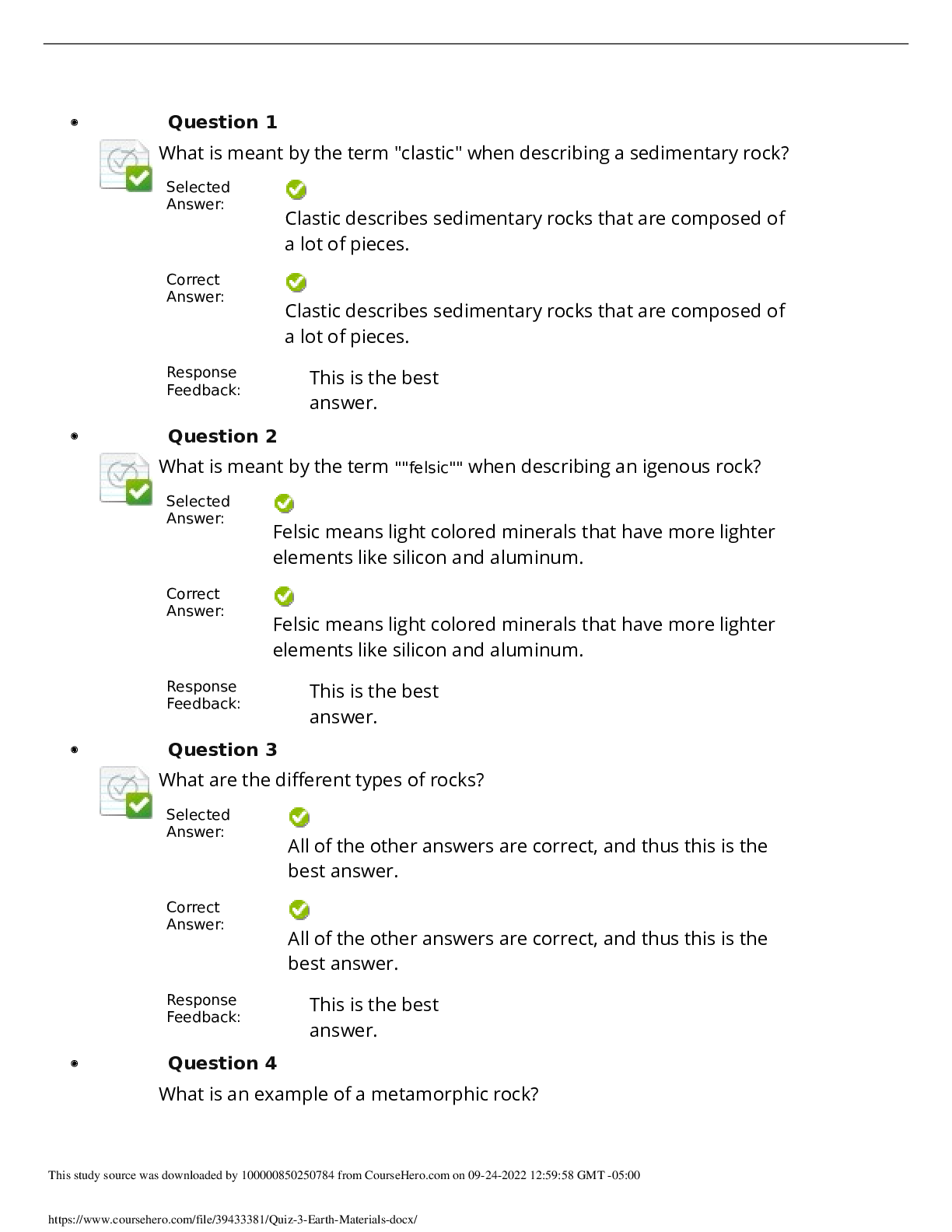
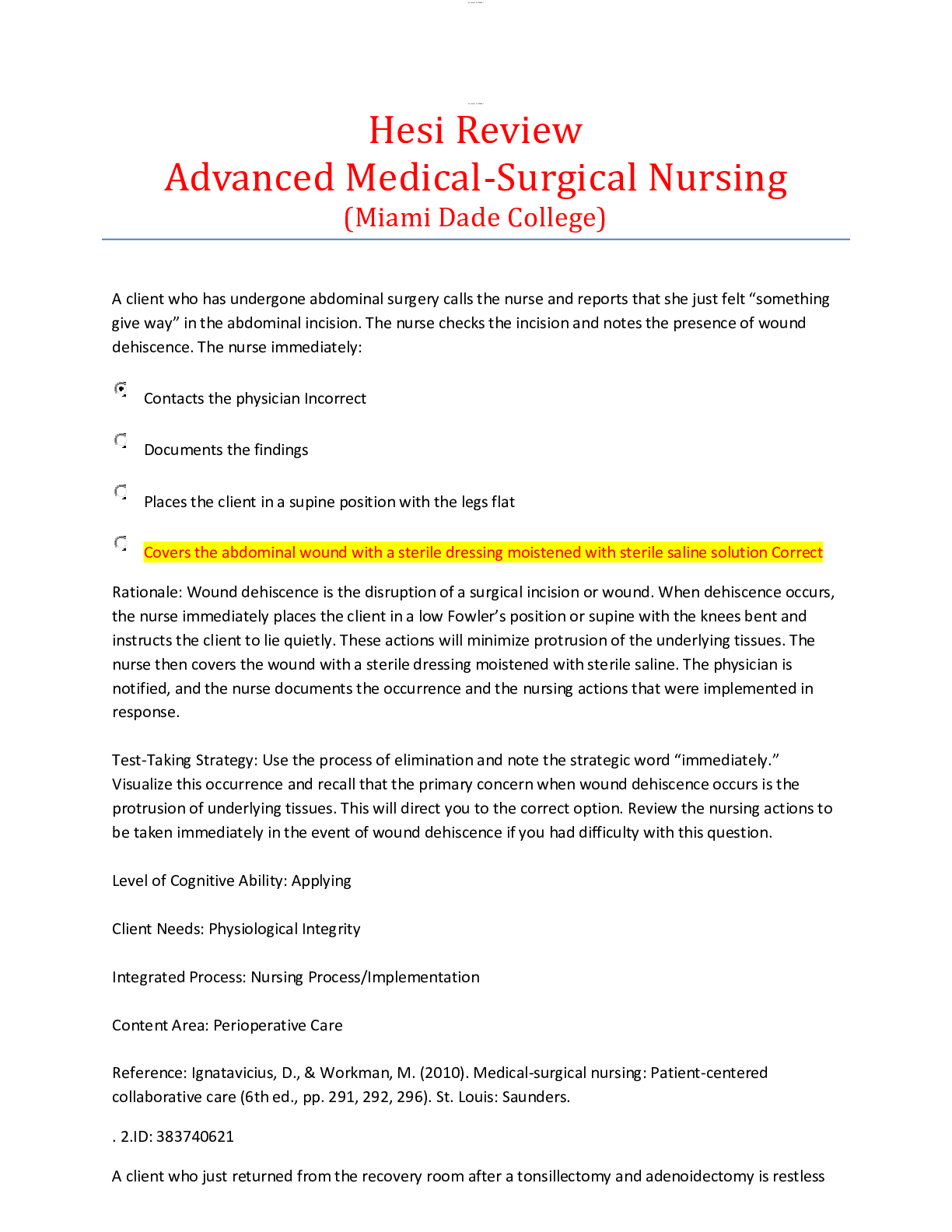
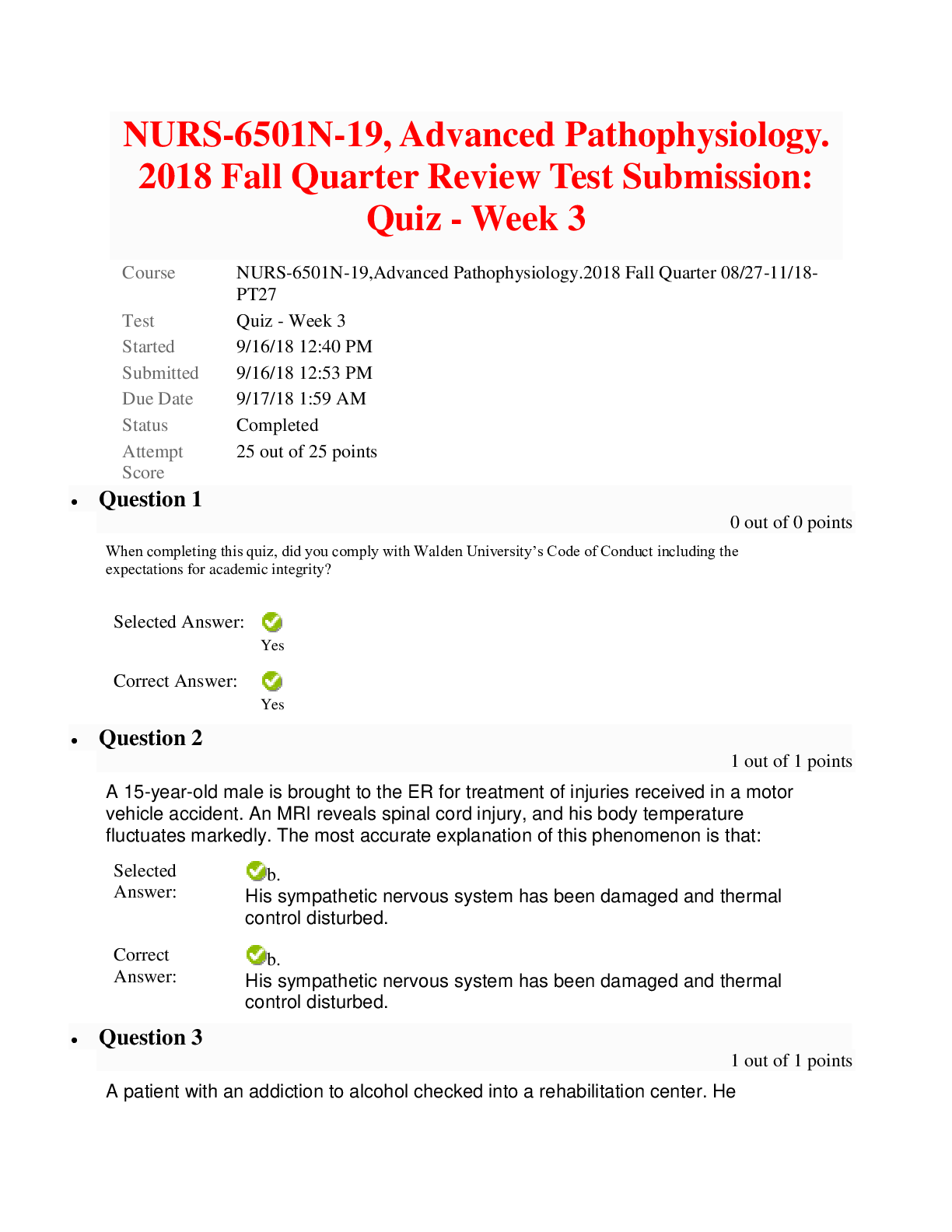

.png)
